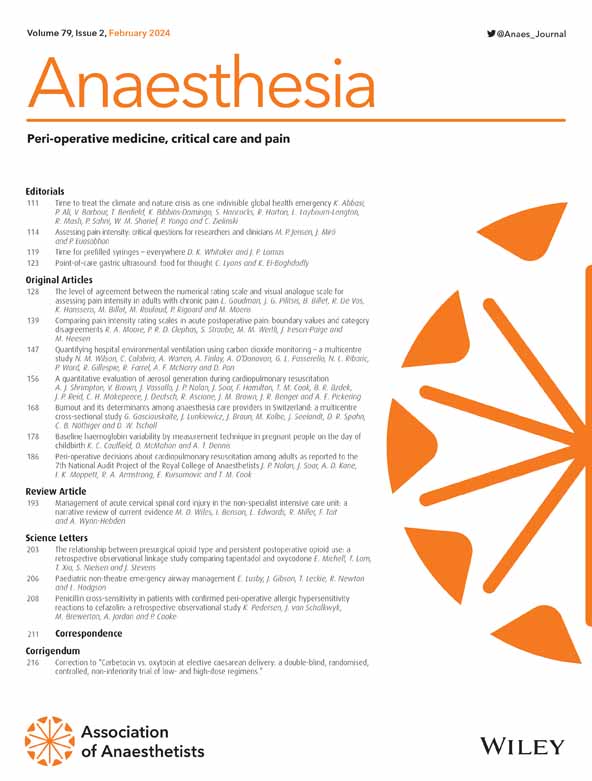Association of Anaesthetists guidelines: the use of blood components and their alternatives
Abstract
Background
The administration of blood components and their alternatives can be lifesaving. Anaemia, bleeding and transfusion are all associated with poor peri-operative outcomes. Considerable changes in the approaches to optimal use of blood components and their alternatives, driven by the findings of large randomised controlled trials and improved haemovigilance, have become apparent over the past decade. The aim of these updated guidelines is to provide an evidence-based set of recommendations so that anaesthetists and peri-operative physicians might provide high-quality care.
Methods
An expert multidisciplinary, multi-society working party conducted targeted literature reviews, followed by a three-round Delphi process to produce these guidelines.
Results
We agreed on 12 key recommendations. Overall, these highlight the importance of organisational factors for safe transfusion and timely provision of blood components; the need for protocols that are targeted to different clinical contexts of major bleeding; and strategies to avoid the need for transfusion, minimise bleeding and manage anticoagulant therapy.
Conclusions
All anaesthetists involved in the care of patients at risk of major bleeding and peri-operative transfusion should be aware of the treatment options and approaches that are available to them. These contemporary guidelines aim to provide recommendations across a range of clinical situations.


 求助内容:
求助内容: 应助结果提醒方式:
应助结果提醒方式:


